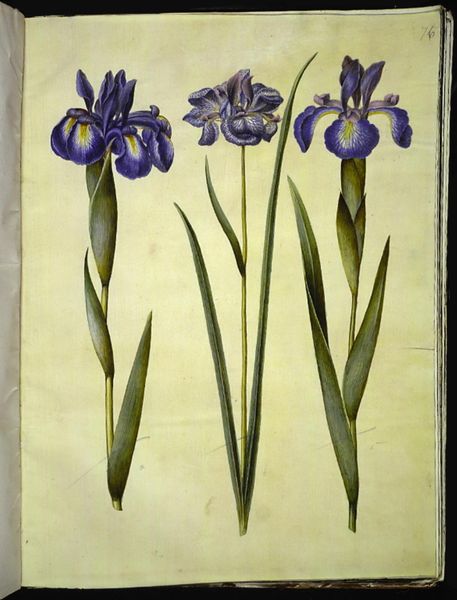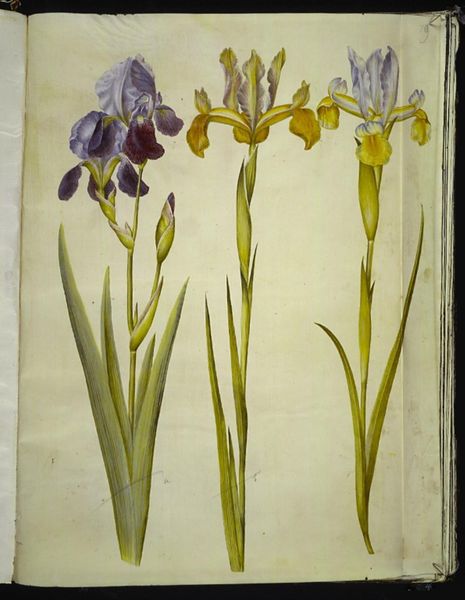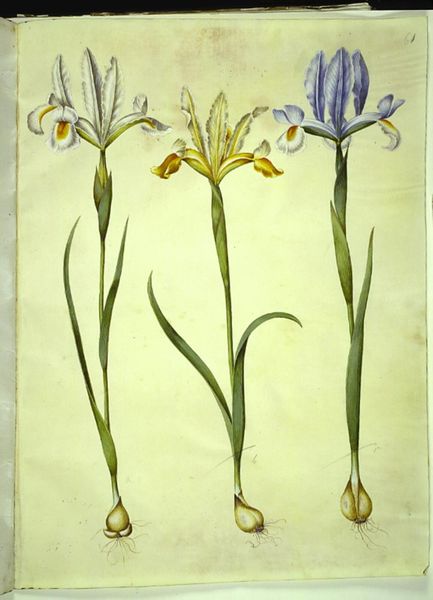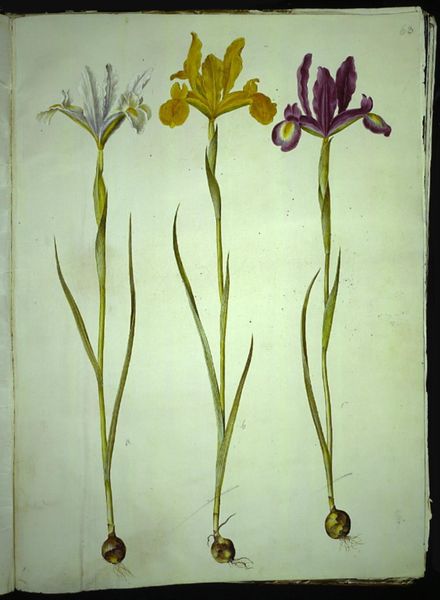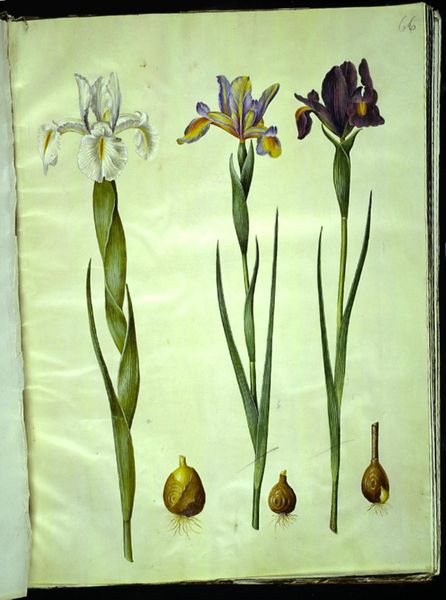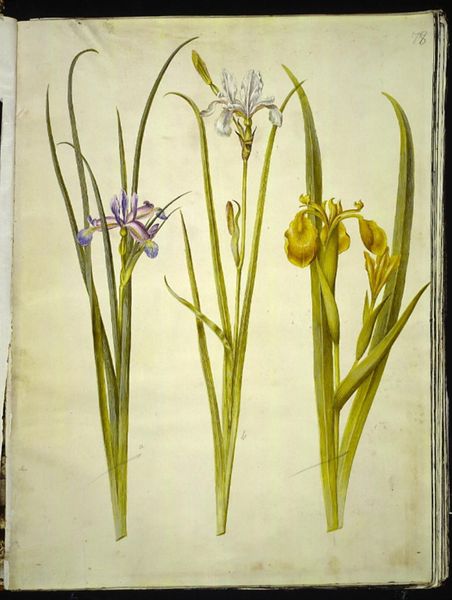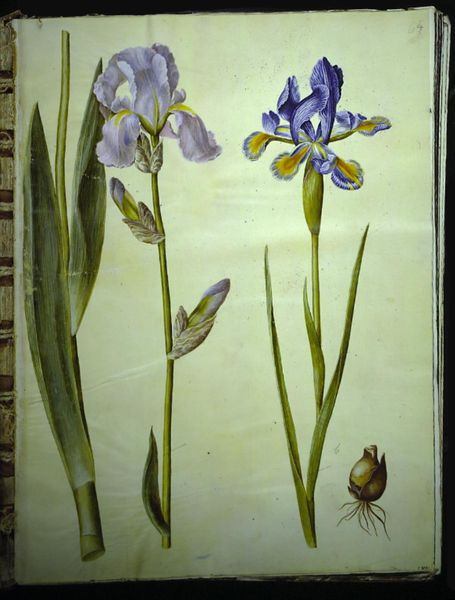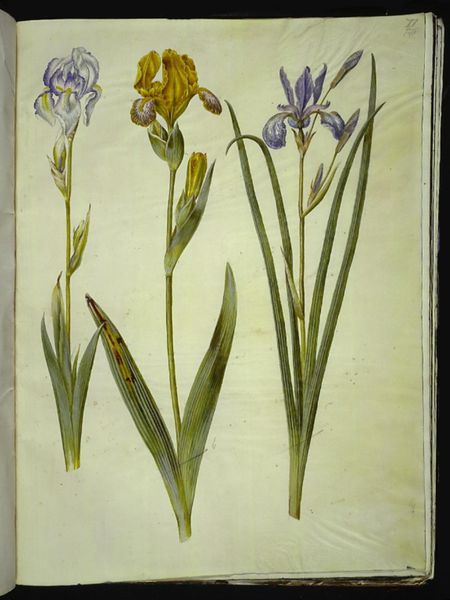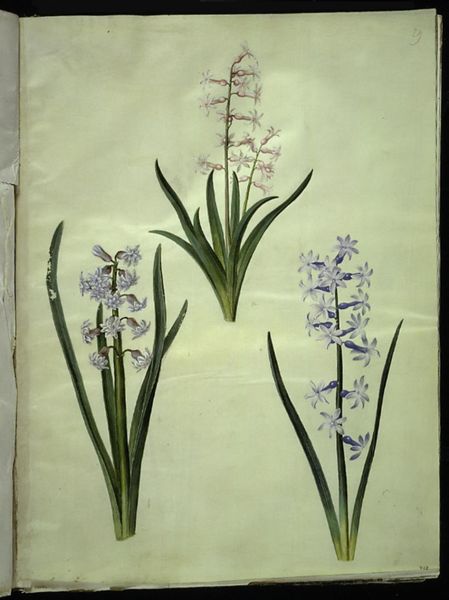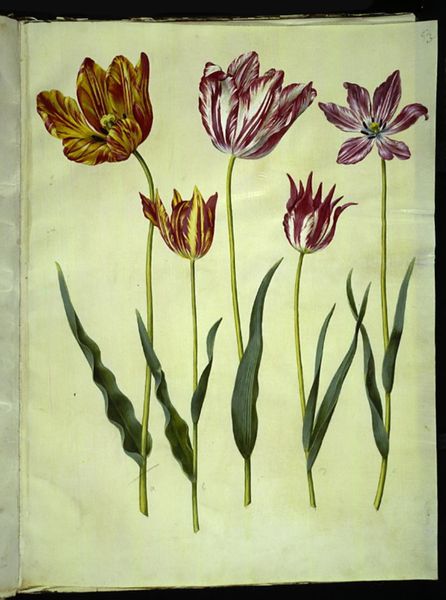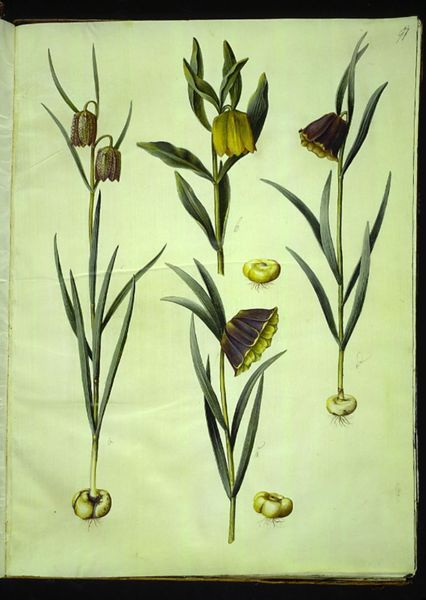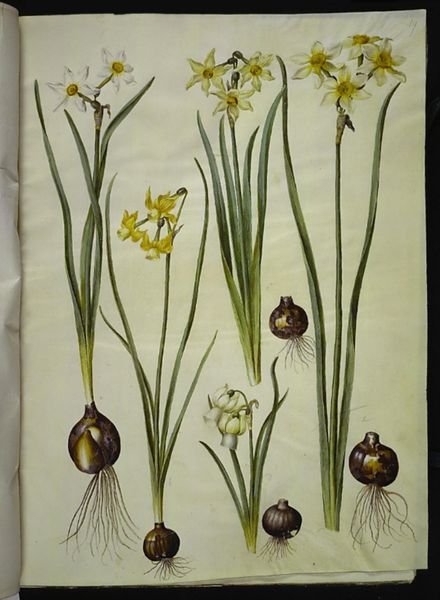
drawing, gouache, watercolor
#
drawing
#
gouache
#
watercolor
#
watercolour bleed
#
watercolour illustration
#
northern-renaissance
#
watercolor
Dimensions: 505 mm (height) x 385 mm (width) (bladmaal)
Curator: I’m struck immediately by the quiet, almost ghostly quality of these irises. The subdued palette gives them an ethereal feel. Editor: We are looking at "Iris latifolia," or "engelsk iris" as it is also known, created sometime between 1649 and 1659 by Hans Simon Holtzbecker. This piece is part of the collection at the SMK, Statens Museum for Kunst. It is executed in drawing, watercolor and gouache. Looking closer at this piece, it’s compelling to consider it in relation to Holtzbecker's patrons, and how their desires for accurate, beautiful botanical records shaped his process. Curator: Exactly. There is the way the light hits those almost bleached petals. The careful application of watercolour speaks to a painstaking method. What were the typical uses of the material around this time? Editor: As a botanical illustration, it obviously serves a scientific purpose, accurately depicting the irises for study. But it also existed within a very specific political context. Flower paintings and illustrated books became associated with affluence and power in the northern Renaissance. So this could have easily become a commissioned piece from one of the noble houses for political gain. Curator: Which makes one consider the sourcing of pigments at the time. Were these pigments derived locally, or did their creation involve colonial exploitation? Editor: An excellent point to raise. Material origins certainly influenced artistic practices. Holtzbecker would have likely had access to pigments through trade routes dominated by wealthy merchants and colonial powers. Considering the sourcing of materials brings a harsh clarity to the perceived purity of these serene illustrations. Curator: This shifts our appreciation beyond just the aesthetics to recognizing these beautiful natural renditions are not separate from labor and global exchange. Editor: Absolutely. Placing Holtzbecker’s artwork within the cultural milieu of his time provides insight into issues that are important to consider today when analyzing the history of colonialism through a lens of gender, class and race. These kinds of works provide not only visual satisfaction, but also invaluable resources for exploring this. Curator: Thank you. These details truly encourage a deeper, more multifaceted understanding.
Comments
No comments
Be the first to comment and join the conversation on the ultimate creative platform.
